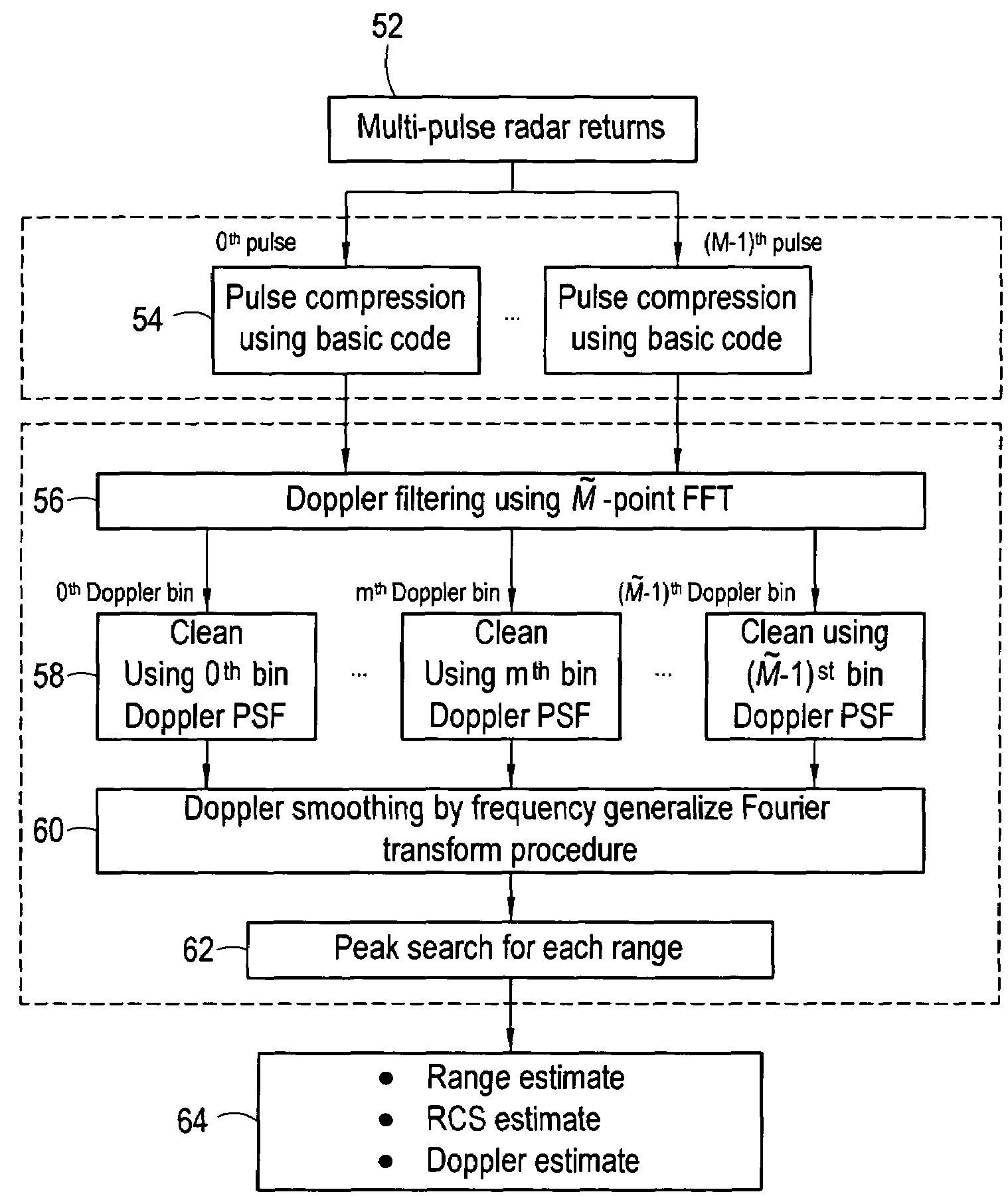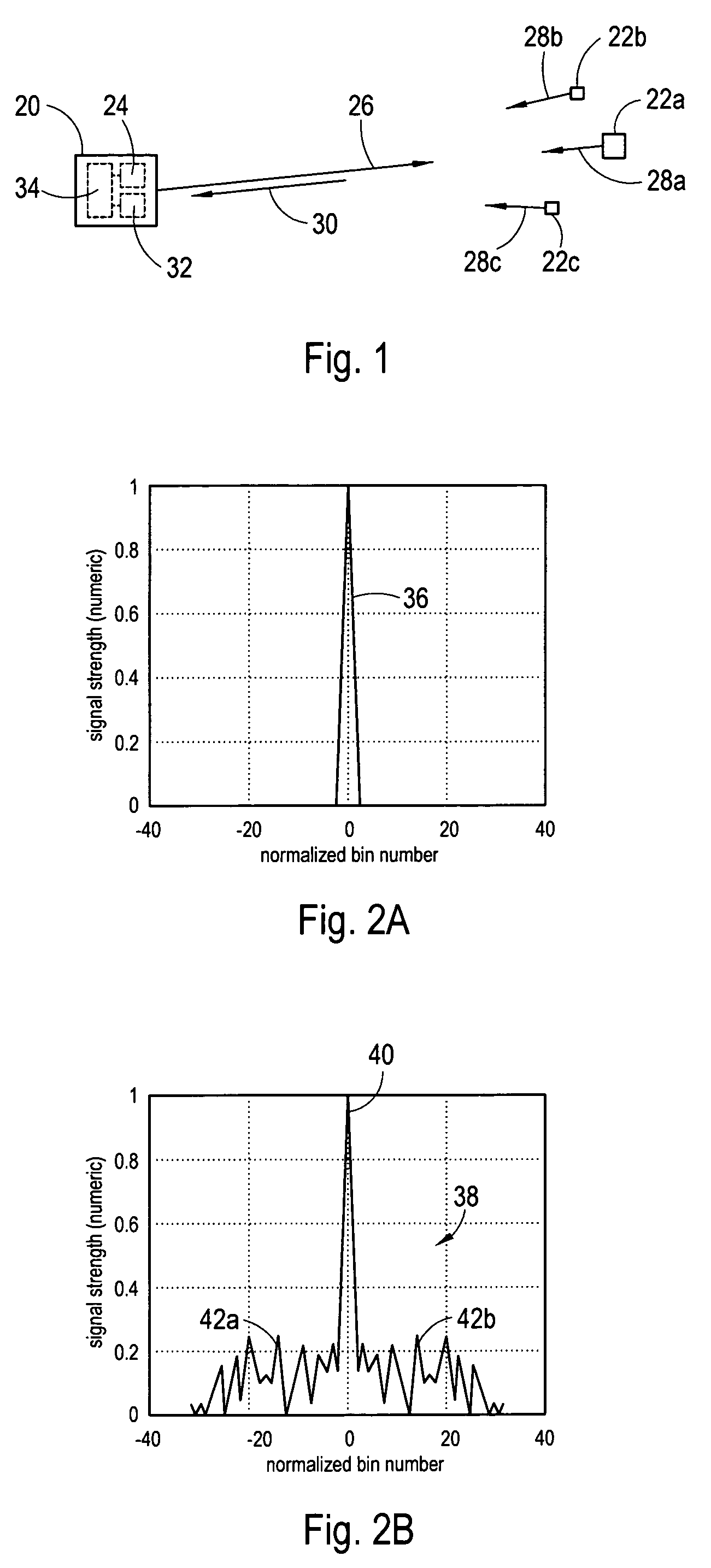System and method for sidelobe reduction using point spread function expansion
a function expansion and sidelobe technology, applied in the field of radar systems and methods, can solve the problems of preventing the return signal from being properly distinguished, the return signal produced has a correspondingly low energy, and it is difficult to detect and accurately calculate the range of two or more closely spaced targets, so as to reduce the sidelobe of the doppler filter, increase the mainlobe width, and reduce the effect of sidelobes
- Summary
- Abstract
- Description
- Claims
- Application Information
AI Technical Summary
Benefits of technology
Problems solved by technology
Method used
Image
Examples
Embodiment Construction
[0023]Referring to FIG. 1, a radar system 20 is shown for detecting a plurality of targets, such as exemplary targets 22a-c shown. Although three targets 22a-c are shown in FIG. 1, it is to be appreciated that more than three and as few as one target 22 can be detected with the system 20. As further shown in FIG. 1, the radar system 20 can include a radar transmitter 24 configured to generate and transmit a coded pulse signal 26. The transmit signal 26 typically consists of a pulse train having one or more pulses. For the system 20, the transmit signal 26 can be modulated with a pre-selected waveform. Suitable waveforms can include, but are not necessarily limited to: 1) a pseudo-random coded waveform, and 2) a linear frequency modulated (LFM) (e.g. chirped) waveform.
[0024]Continuing with FIG. 1, it can be seen that the transmitted signal 26 is scattered by each target 22a-c generating a respective target scatter signal 28a-c. These scatter signals 28a-c combine to create a return s...
PUM
 Login to View More
Login to View More Abstract
Description
Claims
Application Information
 Login to View More
Login to View More - R&D
- Intellectual Property
- Life Sciences
- Materials
- Tech Scout
- Unparalleled Data Quality
- Higher Quality Content
- 60% Fewer Hallucinations
Browse by: Latest US Patents, China's latest patents, Technical Efficacy Thesaurus, Application Domain, Technology Topic, Popular Technical Reports.
© 2025 PatSnap. All rights reserved.Legal|Privacy policy|Modern Slavery Act Transparency Statement|Sitemap|About US| Contact US: help@patsnap.com



